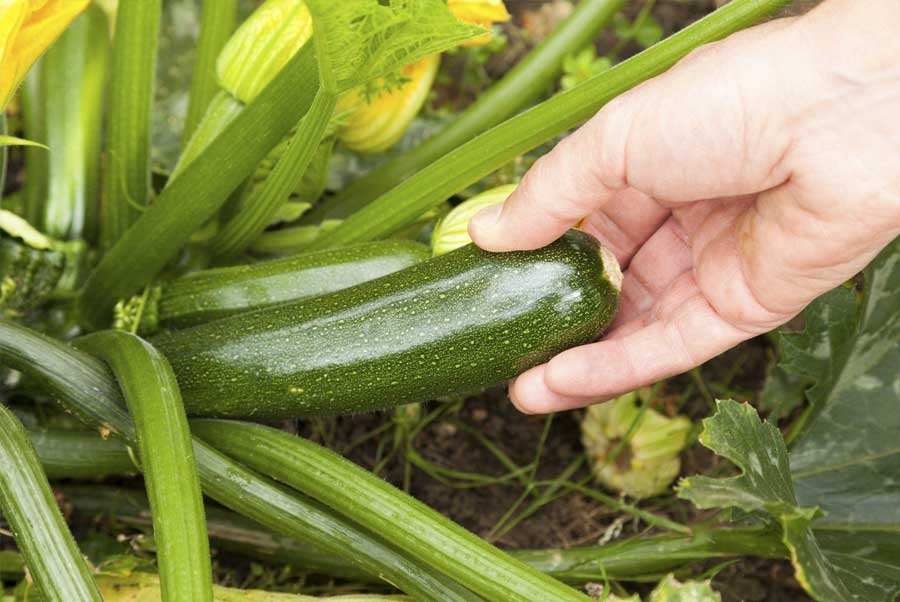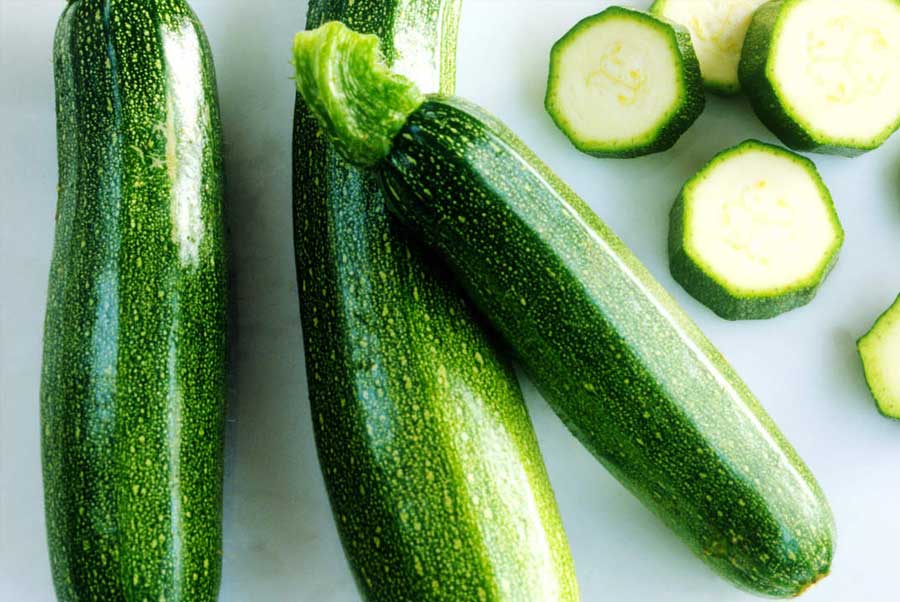Whether you choose to buy seedlings or direct seed your zucchini in the garden, you should plant in a hill of 2 to 3 plants close together. The reason this is important when growing zucchini is because squash flowers need to be pollinated multiple times, to form a viable fruit, and each flower is only open for one day. No pollination means no zucchini, If you have multiple plants growing near each other, you will have a lot more flowers opening on any given day, which greatly improves your chance of getting abundant zucchini.
If the short, one-day lifespan of zucchini blossoms weren’t enough to have to overcome, you also need both male and female flowers open at the same time. Only female flowers will set fruit. The male flowers are there strictly for pollinating purposes.
New zucchini plants tend to set a lot of male flowers at first. This can be very frustrating for gardeners because you see a lot of flowers blooming but no fruits forming. Be patient. Once the plants get in gear, they will start setting flowers of both sexes and, thanks to the early male flowers, there should be plenty of pollinating insects in the area. You will know you have female flowers when you see tiny fruits directly behind the base of the flower.
If you’re really dedicated to your zucchini harvest, you can always take pollinating matters into your own hands. You can remove the male flowers and dust their pollen onto the female flowers, to help ensure good pollination takes place.
Don’t waste those early male flowers. You can still pick them, dip them in batter, and fry them up for a great treat.
Zucchini is a fast grower, ready to harvest in 40 to 60 days from planting. You can start new plants 2 or 3 times per season and still have a big harvest. Since zucchini plants work so hard producing fruits, it’s only natural the plants will eventually slow down and give out. So it’s nice to have a fresh new crop coming in, just when you need it.

Some gardeners feel the initial glut of zucchini is more than enough, but if you like a steady supply, succession planting is the way to go.
Luckily, zucchini is extremely easy to grow from seed. There’s no need to start seed indoors, weeks ahead of time. You can direct sow and expect to see germination within days. The second planting in mid-July and/or mid-August will grow even faster than a spring planting and should start producing in a little over a month.
Zucchini does not tolerate frost or even cold temperatures. You will not gain anything from planting too early. Even if fruits form during cold weather, they will have pitted skin from chilling injury.
If you do plant early, use row covers to protect your plants at night, when the temperature dips near 65 F. Keep them handy in the fall too, to extend your harvest.
Squash vine borers love zucchini as much as we do. The adults emerge from their winter hideout in the soil, sometime in late June to early July. One of their first tasks is to lay their eggs at the base of squash plants. When the eggs hatch, the larvae burrow into the stem of the zucchini plants and start to feed. This cuts off the flow of water through the plant’s stem and can quickly kill your beautiful zucchini plant.
To avoid squash vine borers you could outsmart them by not planting your zucchini until mid-July. If there are no zucchini plants in your garden, there is no reason for the vine borer moth to stop by and lay her eggs. This is doubly beneficial because once the larvae finish feeding on the stem, they burrow into the nearby soil so that they can wake up next spring and lay their eggs near next season’s zucchini plants. Avoiding this cycle for one year can cut down on future year’s problems.
If you really want early zucchini, there is another way to foil this pest and that requires using foil. You can wrap the base of each stem with a small piece of aluminum foil. You only need to cover about 2 to 4 inches of the stem, where it comes out of the ground. Wrap the foil securely around the stem and the larva will not be able to bore through it.














